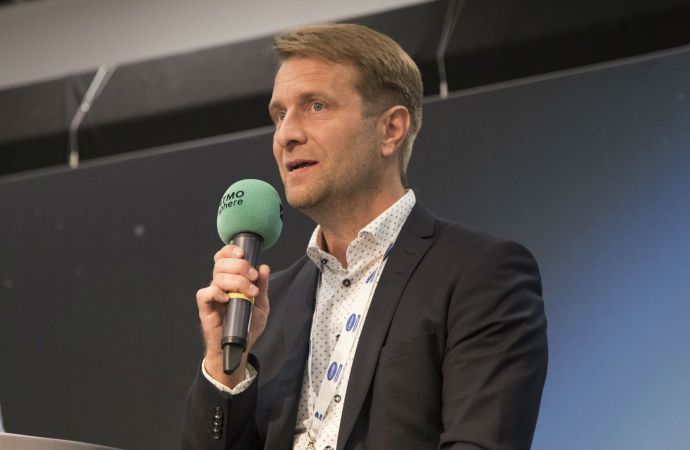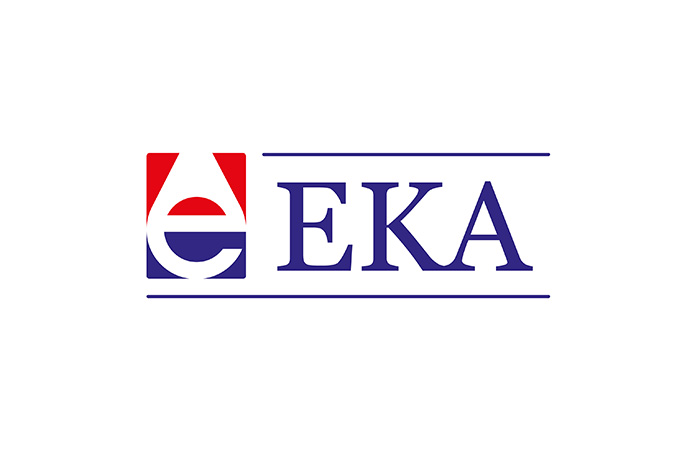Jörgen Rogstam, managing director at ice arena specialists EKA (Energi & Kylanalys), gives his opinion on how the PyeongChang 2018 Olympic and Paralympic Winter Games could be more environmentally friendly.

Jörgen Rogstam, managing director at EKA (Energi & Kylanalys) speaking at ATMOsphere Europe 2017 in Berlin, Germany.
Jörgen Rogstam, managing director at ice arena specialists EKA (Energi & Kylanalys), reacts to the news that the ice rinks at the PyeongChang 2018 Olympic and Paralympic Winter Games – taking place in the South Korean county from 9-25 February – are using HFCs:
Most of the ice rinks in PyeongChang 2018 Olympic and Paralympic Winter Games are temporary designs and constructions. To some extent the refrigeration and ice rink equipment is leased and may be used for other purposes after the games. In this case rather simple solutions have been chosen, which unfortunately are not the most environmentally friendly.
The Olympic arenas in South Korea are of indirect type on the cold side, which implies that they use a secondary refrigerant – probably glycol, implying either ethylene or propylene glycol. Neither of these have particularly good properties. Therefore they have not been used much in permanent installations in northern Europe.
The Olympic ice rink facilities have been built over the last couple of years and the refrigeration units use the HFC R404A as primary refrigerant. Two different types of glycol are used in ice rinks: ethylene and propylene. Both have rather poor properties in an ice rink context.
The disadvantage with glycol in general is a rather high pumping power, which drives the energy usage of the facility. This can mean that a facility owner may pay electricity costs two times for an increase in pumping power – firstly as input power to the pump and secondly to cool the increased amount of heat generated by the pump by the secondary refrigerant. It is not uncommon that the secondary refrigerant pump power share of a total refrigeration system energy cost is around 10-15% for the facility owner.
There are few other applications than ice rinks where the conditions could be better for natural refrigerants."
– Jörgen Rogstam, EKA's managing director
There are few other applications than ice rinks where the conditions could be better for natural refrigerants. In Europe and specifically Sweden most ice rinks have historically been built with ammonia and only a few with HFCs. Since ammonia has been a well-established refrigerant for many years it should also have been a feasible solution in South Korea. Small charge ammonia systems have also been proven to be both energy-efficient as well as safe solutions.
Today we see rapid growth for CO2 in the ice rink segment and we estimated there are now close to 100 ice rink systems using this natural refrigerant in the world since 1999. About 60 of these are of the second-generation type using CO2 as primary refrigerant. Most of them have been built since 2010 and the numbers are growing rapidly. Approximately 20 of these CO2 transcritical systems are in Europe and about 40 are located in North America.
Out of the Swedish ice rink crop about 12% still use HFCs and the rest use ammonia (84%) or CO2 (4%). As an estimation, eight out of 10 new projects nowadays choose to go CO2 and very rarely HFCs. In Sweden alone, there are 15 CO2 ice rink systems in operation this season and another 10 will likely be installed by next season. This illustrates the rapid growth rate in CO2 systems being used.
Recent studies of different arenas using CO2 as the refrigerant have shown that larger arenas may save 80-90% of the total heat demand by using recovered heat from the CO2 system. Smaller arenas can often be completely self-sufficient by using a well-designed heat recovery system.
Propylene glycol is the least environmentally harmful of the two glycols that are used and is therefore often used in temporary installations, which may make sense since there is a larger risk of leakage. In permanent installations the most commonly used fluid today in Sweden is ammonium hydroxide (ammonia dissolved in water), also referred to as ‘aqua ammonia’. It is used in about 30 Swedish ice rinks today, for both new constructions and retrofits. This is an environmentally friendly and very energy-efficient fluid, which offers low corrosivity and very low pumping power. Compared with ethylene glycol it will use only 45% of the pump power and with propylene glycol as a reference the corresponding figure is as low as 19%! In modern installations using ammonium hydroxide, as a secondary refrigerant, the pump power share is often less than 5% of the refrigeration system’s total power cost.
Today we see growing interest in using CO2 as a refrigerant in winter sports applications in Europe, America and also China. The primary reason is often simply that CO2 is not an HFC and currently there are no viable alternatives to HFCs out there. Low-charge ammonia is a very good alternative but sometimes national safety regulations can make it difficult to use. Secondly, the use of CO2, offers the added bonus of being able to recover huge amounts of heat, which can make winter sports facilities nearly self-sufficient with heat. It also allows recovered heat to be used for functions where it has previously not been used, such as dehumidifier reactivation.
Jörgen Rogstam, managing director at EKA, has designed many of the CO2 ice rinks that are now operating in Sweden. He has also presented research papers on CO2 ice rinks at key refrigeration events like the Gustav Lorentzen conference on natural refrigerants.
Related stories

_1618306667.png)
_1618386319.jpg)
